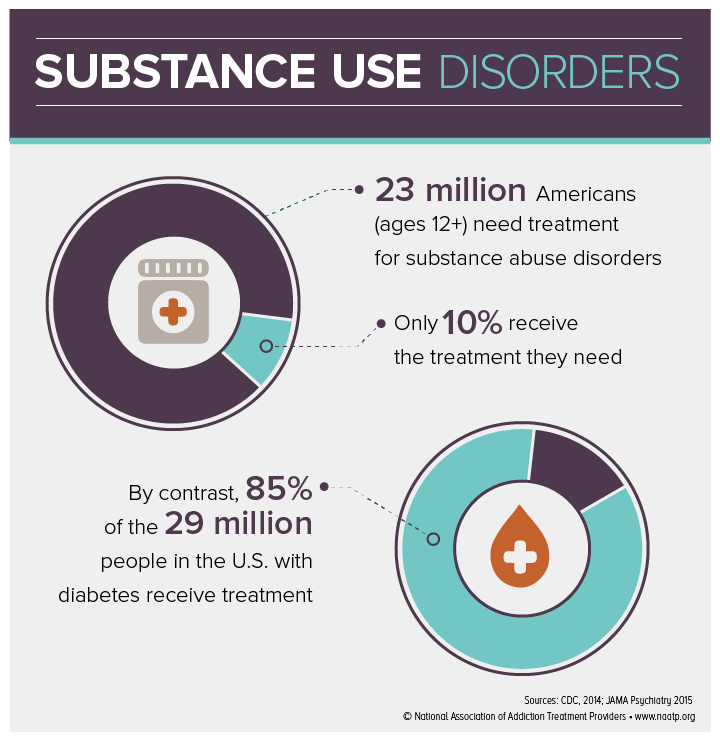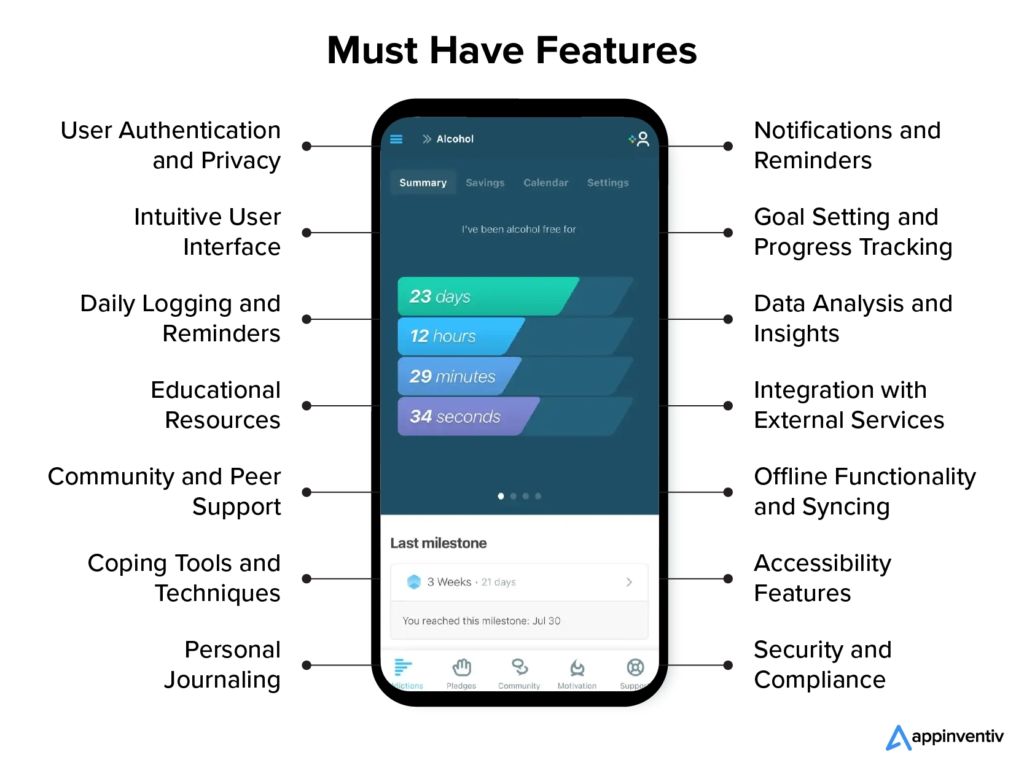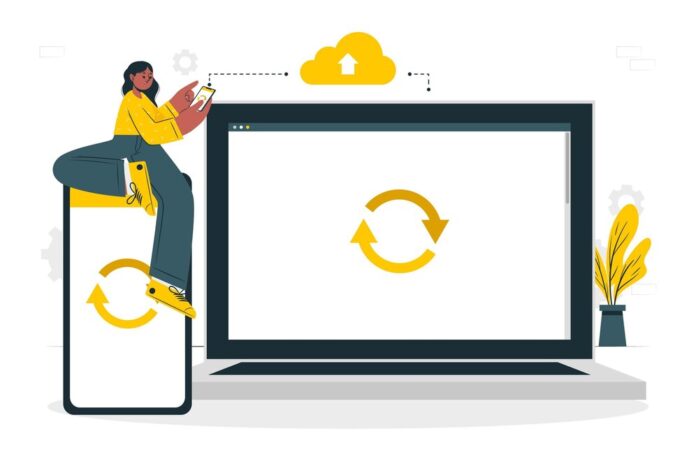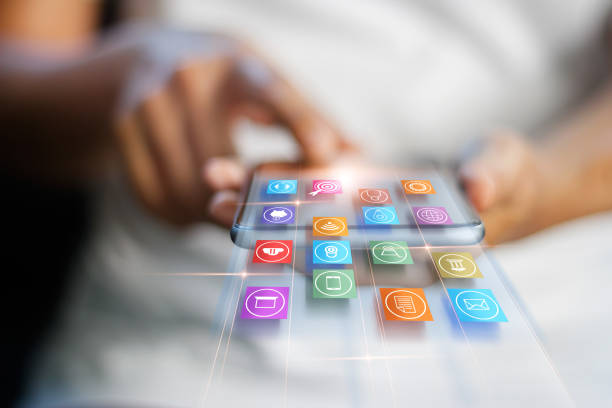Today software has penetrated all sectors of our lives, and the same goes for addiction center treatment. Addiction recovery applications like the I Am Sober have also emerged to help people track their sobriety with free monitoring applications and get support along the way. Nevertheless, have you ever considered how much it costs to produce an app such as this? In this post, we provide an in-depth analysis of the budget for I Am Sober, so you can understand a little bit about what goes into developing an addiction recovery app. If you’re looking to hire Flutter app developer for a similar project, understanding these costs and intricacies will guide you in your decision-making process.

The Core Features of a Recovery App
I Am Sober is a recovery app with many dynamic elements designed to help individuals recover from addiction. This app serves as a valuable aid, allowing people to monitor their clean days and giving them something tangible on which to base their pride. That’s only the beginning, however.

- Most recovery applications include a daily motivational message, designed to help people start every day on the right foot. Doses of encouragement like these help to maintain user dedication to sobriety.
- Another important element is community support forums. They allow users to come together on the Internet and use these digital spaces as an arena in which they can engage one another freely, tell their own stories, and receive or offer mutual help. This feeling of community has made a considerable impact on the recovery process for users.
- Also, reminders for appointments or private counseling encourage users not to drop out of the recovery process. Apps to facilitate recovery also often feature resources for further assistance, offering a complete tool belt.
- What about the family members on the user’s side? For instance, some of the recovery apps make it possible for friends and family to be a part of their loved one’s journey back to health.
When put together, these features make for a formidable online counterpart that helps people stay sober and makes them feel empowered, connected to others on the same journey as themselves, and ever-improving.
The Development Process of a Recovery App
The process of recovery app development is a complex process that involves many stages and professionals.
- The first step involves brainstorming and planning, setting out the scope of the work to be done. The design stage makes an effort to humanize the app. Wireframing, prototyping, and UX-UI design at this stage ensure that the app is easier to use.
- Second comes the development stage, in which code is written. The skills of skilled developers bring these kinds of features to this stage, such as sobriety trackers and community support forums. The technical structure of the app also takes shape during this period, laying a foundation for an easily operable user interface.
- Thereafter comes quality assurance testing. This also means that the app is thoroughly tested to ensure it runs smoothly, is easy for people to use, and has no bugs or glitches. This stage is particularly important to make sure that with the app on hand, there are no rough spots.
- After testing comes the moment of the release! The stage is getting the app up and running on as many platforms (App Store, Google Play) as possible so that people can use it to start working towards sobriety.
This process usually takes a few months or up to one year depending on the complexity of the app. Of course, there is no question that a talented development team made up of experienced developers, designers, and project managers who understand addiction recovery itself–is an essential prerequisite for this journey. They make the I Am Sober recovery app dream into reality.
Factors That Influence the Cost of Building an App
For the Cost to Build an Addiction Recovery App, all kinds of factors are involved, and each has its weight in the cost structure.
- The degree of difficulty is a major variable. A visually appealing and convenient design can add a new dimension to user participation, yet the price of such an impact is often high.
- Yet another consideration is what features you want to incorporate. Such a simple sobriety tracker won’t necessarily empty your pocketbooks, but if you add things like community support groups, day-to-day encouragement messages, and prompts to keep at it as part of the mix–well then fat costs are inevitable.
- Another source of cost is the technological architecture adopted by your app. Back-end infrastructure is refined, and seamless for the user–but it costs a lot of money. Which technology stack you choose–whether it’s native development or cross-platform solutions — may also influence your budget.
- Third-party integrations (like payment gateways or social media sharing) may increase the utility of your app while increasing costs. Finally, remember to allow for the recurring expenses of app maintenance and updates. If your app keeps adding onto these aspects, then it will stay true to its purpose in the long run.
The Estimated Cost of Building a Recovery App
How much, however, is rather a flexible figure based on many variables. The starting point could be something similar but with more basic features, at $10,000 – $50,000. But if your goal is a more advanced job with many high-level functions and services, you may have to pay as much as US $ 100,00.
The Cost to Build an Addiction Recovery App is strongly influenced by such factors as the complexity of features, rates and skill level of development personnel involved, and overall project timeline. The design, complexity of technology employed, and the back-end infrastructure needed may further increase the budget. What’s more, the addiction recovery app development cost would increase because you have to bring in third-party integrations or set aside a fund for future maintenance and upgrades. Don’t be put off by these numbers, though.
Funding Options for Developing a Recovery App
Now you’ve got an idea of addiction recovery app development cost. Let’s have a look at some funding options for recovery app development.
- One approach is the use of crowdfunding, which offers you access to a group of potential backers who share your thinking and are willing to help fund it. Forums such as Kickstarter or GoFundMe are ideal platforms to express your vision and seek support.
- The second possibility is investors. If you are interested in health tech or social impact investment, then an app for addiction recovery can be your thing. If you can successfully pitch your idea to venture capitalists or angel investors, both financial backing and industry contacts are easy pickings.
- Another possibility is applying for grants. Many government and private groups have grants for tech projects that address social or health problems. Such grants offer the kind of financial support that can help you make your app a reality and, as they don’t have to be repaid after receiving them, are an ideal source.
- If non-profit groups are going down the app route, partnering with a health agency or finding corporate support could certainly offer solid financial resources. An app to deal with addiction can be sponsored by companies and agencies interested in social responsibility.
The Return on Investment of a Recovery App
When we discuss the return on an application’s investments, what do you mean by returns? Of course, revenues can be received through methods such as in-app purchases, subscriptions or advertising. But even more remarkable is the social rate of return. When each of those users gets control over their life, then the app is a success. Every sobriety achievement made, every encouraging word exchanged in community forums, and everyday promise reaffirmed–these are the real rewards.
Nevertheless, one must not overlook the possibility of real money-making. Things like in-app purchases (premium features, extended access) can also generate a stream of profits. Subscriptions to specialized content or special features can also be an important source of income. Moreover, alliances with other companies or groups whose products might be notified by the app can lead to opportunities for in-app advertising–yet another source of income.
The Road to Recovery Is Digital
The digital transformation of health care has created entirely new channels for help and assistance. The rise of Addiction Recovery App Development such as I Am Sober is a notable case in point. As these digital tools have crossed the gaps, they’ve become vital resources for addicts. With the world increasing digital, it is obvious that recovery strategies need to keep pace as well. Investing in a recovery app is not just an investment; it’s also an expression of belief that technology can be used to fight against addiction.
For some people, these apps are more than just tools for the digital age; they represent a virtual lifeline of encouragement and support that fosters accountability in daily life while also encouraging a sense of accomplishment. Simply put, the road to recovery has been civilized for people seeking a screen-hugging way out. With demand for these kinds of applications still skyrocketing, the chance to do something worthy exists. This is an investment in society. The benefits don’t stop at monetary value, for they can be gauged even more by the reformed lives and defeats of substance abuse that result from it all.
Conclusion
Addiction Recovery App Development, such as I Am Sober, involves many factors to consider, from feature design and difficulty level to funding sources. Engaging a dedicated Flutter Development Company for the creation of such mission-driven aid apps is crucial. The price paid for creation must be regarded as an investment in social upheaval, helping people on their path to recovery. These mission-driven aid apps also require financial investments, but the value can be counted in lives transformed and days of sobriety extending farther into the future. Even as we utilize the power of technology to engage in this battle, do not forget that there is nothing more valuable than seeing a recovery app at work.








